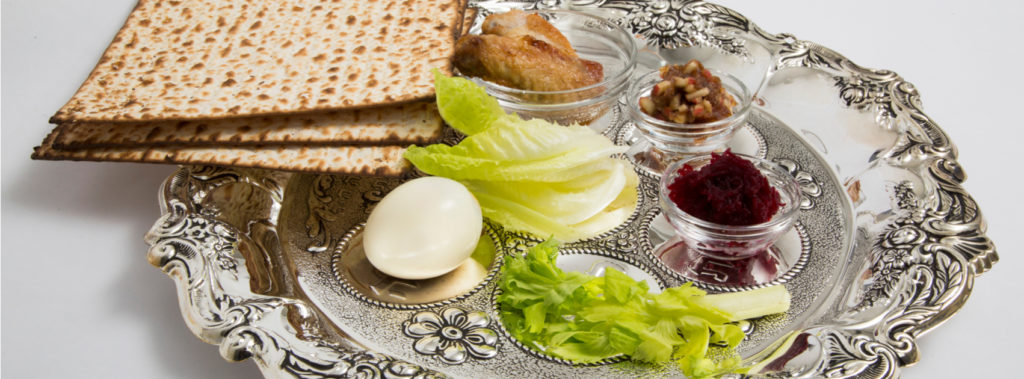As we at My Olive Tree prepare for the Passover season, we thought we would take a quick look at the significance of the Seder plate. During the Passover Seder traditional foods are served. However, many people are unaware that these foods hold special significance to those in attendance. Not only is the food prepared specific to this ritual dinner, but even the way in which it is set at the table holds intrinsic value.
The Seder plate:
Depending upon the size of the Passover table there will be at least one Seder plate. Each plate holds at least six ritual items including: the shankbone, karpas, charoset, marror, and an egg. This plate is often heavily decorated, and displayed in a primary place within the home throughout the rest of year.
Roasted lamb shankbone: A striking symbol of Passover is the roasted lamb shankbone —called the zeroah in Hebrew. The bone commemorates the lamb sacrifice made the evening that the the ancient Hebrews fled Egypt. Zeroah, meaning “arm”, refers to the arm of the Lord, as He stretched out his arm to save the Jewish people out of slavery.
Roasted egg: The roasted egg, or the baytsah, stands in place of one of the traditional sacrificial offerings, which would have been performed in the days of the Second Temple. Many subscribe that this also represents, that in the heat of the fire, God’s people remain unscathed.
Maror: Refered to as the “bitter herb,” maror is a spicy root, that when eaten brings bring tears to the eyes. This act refers to the bitterness the ancient Hebrews experience while living in Egypt. It is also a time for the modern-day Believer to reflect on bitter enslavements within themselves.
Charoset: The opposite of the maror, charoset is a sweet and chunky applesauce filled with apples, nuts, wine, and cinnamon. Charoset not only signifies the mortar placed between the bricks created by the Hebrews while in slavery, but it also reflects the goodness of God who is faithful to remove the bitterroots from our lives.
Karpas: Karpas is a green vegetable and is typically replaced with Parsley at the contemporary table. A small vile of salt water sits nearby and the karpas is dipped into it several times throughout the meal. Dipping food was considered a luxury in ancient times. This act symbolizes new life as we walk out of slavery, into the promised land.
Chazeret: The chazeret is a second bitter herb and has the same meaning as the maror.
Salt water: Although the salt water symbolizes the sweat and tears experienced during slavery in Egypt, it also stands for purification and healing.
Matzah: Three pieces of matzah also are placed upon the Seder plate. This is a bread, made without leaven, and does not rise like traditional bread. This bread would have been made hastily allowing the Hebrew children to escape quickly. Leaven in bread allows dough to rise and puff up. The removal of leaven represents the removal of personal pride in our souls.
Wine: Each individual attending the Seder is given a cup, or glass, from which they drink four cups of wine. Traditionally these represent the four promises of God. “I will take you out…”, “I will save you…”, “I will redeem you…”, and “I will take you as a nation…”.
Please join us for Passover! My Olive Tree cordially invites you to join us LIVE online Friday, April 22nd at 7:45 p.m. (CT) at www.TheOneNewMan.com.
The Passover season is one of the most important seasons for our ministries, and we would be honored to have you worship with us!
In fact, you might wish to host a Seder at your home for your family and friends while you follow along with us via LIVE stream!
Here is what you will need to create your own Seder plate:
- Matzah
- Horseradish (One teaspoon per person is ample)
- Charoset (We make enough for a heaping tablespoon per person)
- Parsley (Just enough for everyone to have a sprig)
- Salt water (Enough for people to dip their parsley into)
- Grape Juice or Wine (Enough for each person to have 4 sips—you will also need 4 small cups or glasses per person)
- It is also traditional/symbolic to have a roasted lamb shank bone and a boiled egg on the table
We hope that you will make plans to join us LIVE online as we celebrate the Feast of Passover together!
